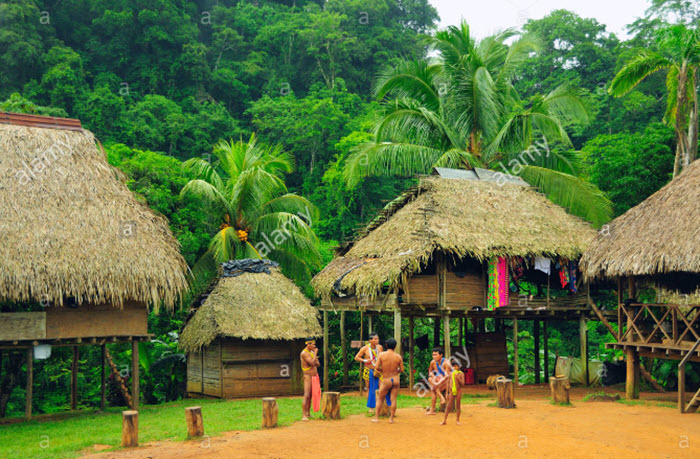Greetings from my self-imposed quarantine (although I am feeling fine) after returning from Panama, home to the Panama Canal, the most important waterway in the world.
The Isthmus of Panama divides North and South America, the crossroads of the world. Its name means “rich land of butterflies, trees, and fish.”
But in this humid climate, sunscreen and mosquito repellent are a must! The butterflies and birds (1000 species) were vibrant colors; the flowers and rainforests were awesome, and the Capuchin monkeys and lizards were somewhat daunting and entertaining. Fruits and fish were delicious
This country has become a melting pot, but native tribes like the Embera, which we visited, live within the rainforest of the Darien Jungle on the Chagres River. They still live their traditional way of life; we would call it primitive, but they call it normal and natural.
The founder of this small village, Mr. Zarco, was a medicine man, but he worked for the United States during the building of the canal and later for NASA to train astronauts and later soldiers in survival skills in the jungle.
One of those astronauts was our very own Gordon Cooper, who was born in Tecumseh and whose grandmother lived here so he visited often! Their children are required to attend school so many of their young adults are leaving their way of life with its basket weaving, wood carving, ceremonial dancing, canoe fishing, and nudity. It was a fascinating glance back in time at a simplistic life happening now.
The earliest explorers were Spanish, and when gold was discovered in the current country of Peru, the King of Spain saw a need for a permanent road across the land. This was the beginning of many efforts to connect the Pacific and the Atlantic Oceans for the purpose of trade. Many tried, many failed, and many, many lives were lost. Yet in 1901, President Theodore Roosevelt pushed Congress to approve plans for a Central American canal.
In 1903 this new nation was created (they were originally a part of Columbia), and the USA was given control over a 10 mile-wide Canal Zone for 10 million dollars. It was very interesting to visit the Canal Museum and to cruise the canal and observe the workings of the Miraflores and Agua Clara Locks which are the original 7 foot steel gates.
Vessels are guided by tugboats and pulled by small trains. These locks were essential to being able to move ships through the canal because of the difference in the water levels of the 2 oceans. The Panama Canal officially opened on August 14, 1914, with the transit of the S.S. Ancon in just 9 hours from ocean to ocean. America had succeeded where others had failed.
They have since widened the canal and added locks and a large man-made lake called Gatun Lake to help with the conservation of water and the flow of ship traffic. It is still cheaper to go through the canal than to go around Cape Horn, South America.
Now the problem was that the country was split in two, so the Bridge of the Americas was built. It carries up to 35,000 vehicles a day including our bus so that we could say we had been to South America by crossing the continental divide and the free trade zone!
Since then, two additional bridges have been built to connect the two Americas: Centenario and Atlantic suspension bridges.
So why doesn’t the United States own the canal now? United States now had several citizens living in Panama because they were born or worked in the Canal Zone. After several protests and disturbances, and through the mutual cooperation between the two countries, President Carter signed a treaty in 1977 to transfer control to the Panamanian government on Dec. 31, 1999. So for the last 10 years they have successfully controlled and prospered from the Panama Canal and the military bases left behind.
In fact, American dollars are legal tender in Panama. There was plenty of time for shopping for native handicrafts and time to enjoy the beautiful beaches of the Atlantic and Pacific Oceans that are located north and south of Panama (that’s what I said! Yet, the sun rose over the ocean!) I came back relaxed and refreshed from an amazing and informative trip. Ahhh, but there’s no place like home, especially in a world-wide pandemic!
Thanks to the wonderful staff at the Golden Age Center, meals are available to members for drive-by pickup if you call in. Remember many places have safe drive-by windows or food delivery for your convenience. Please do not panic because most are living through their bout with this virus. It is just very contagious. Use the safe hand washing and social distancing recommended. Read Psalms 23 for comfort!

